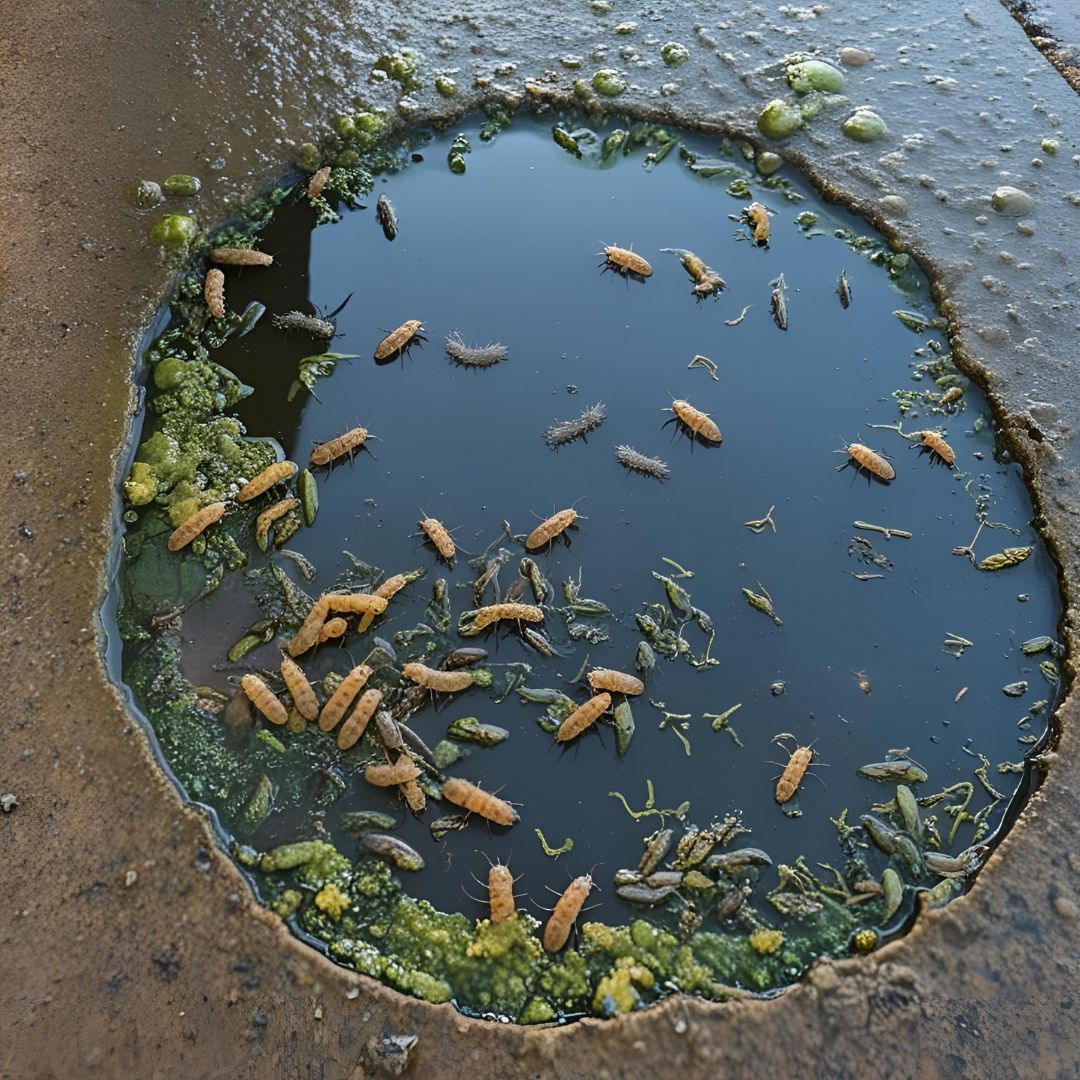Rain has the power to temporarily transform the environment, creating small, ephemeral worlds that are fascinating. Puddles, which form on sidewalks, empty lots, and other urban spaces, are temporary ecosystems that emerge and disappear quickly, but during their short existence, they sustain a surprising diversity of life. These fleeting micro-habitats, often overlooked, harbor a variety of organisms that take advantage of the ideal conditions to develop. This phenomenon is an excellent example of how nature can adapt and generate life in different contexts, even in a simple reflection of water.
The Emergence of a Temporary Ecosystem
After a rainfall, puddles form in areas of uneven terrain, creating small pockets of water that remain for a short period but are enough to give rise to vibrant ecosystems. Inside these puddles, we find a variety of organisms such as insects, mosquito larvae, small crustaceans, and even some species of algae and aquatic plants. Within hours or days, these micro-habitats can harbor entire life cycles of organisms that adapt to this temporary environment.
These temporary ecosystems are not just refuges for life, but also an opportunity for various species to complete their life cycle. Some insects, like mosquito larvae, develop rapidly in puddles, while others, such as tadpoles, have an even shorter lifespan, disappearing as soon as the puddle dries up.
Life that Emerges in Puddles
What makes these temporary ecosystems so fascinating is how quickly life forms adapt and proliferate. Insects like puddle flies and other aquatic organisms begin to emerge and feed on algae and debris accumulated in the puddles. Mosquito larvae, for example, can complete their life cycle in just a few weeks, while other organisms, like microcrustaceans, may inhabit the puddles for longer periods.
Even aquatic plants can adapt to these temporary conditions. Some plants and algae manage to germinate and grow quickly in puddles after rain, helping to sustain the food chain within the ecosystem. This type of adaptation allows these organisms to make the most of the ideal conditions of an environment that only exists for a limited time.
Ephemeral Ecosystems and Their Lessons on Resilience
Puddles are an excellent example of how life can be resilient. Even in temporary and constantly changing environments, many species adapt remarkably. Survival in these conditions requires incredible adaptation and efficiency. These ephemeral ecosystems also teach us about the importance of water in sustaining life and how even small pockets of water can be crucial in supporting local biodiversity.
Moreover, puddles are an important food source for many predators, such as birds and frogs, who feed on the insects and other organisms that inhabit these temporary areas. This quick and dynamic life cycle also provides a lesson on how species can seize opportunities that arise, even in unstable conditions.
The Ephemerality of Temporary Ecosystems
While these ecosystems are incredibly rich in life, they are also extremely ephemeral. The evaporation or natural drainage of the puddles causes these habitats to disappear quickly. This cycle of creation and destruction is a natural part of temporary ecosystems, allowing new forms of life to emerge in a very short amount of time. The speed at which microorganisms and organisms establish themselves and disappear in puddles also serves as a reminder of the fragility of many natural habitats.
The ephemerality of these ecosystems also impacts the species that inhabit them. Some need to complete their life cycle rapidly, while others depend on specific conditions to thrive. This phenomenon shows us that nature, although incredibly dynamic, also requires a delicate balance between elements to sustain the diverse forms of life.
The Importance of Observing These Ecosystems
Observing temporary ecosystems like puddles allows us to see nature in action in a dynamic and fascinating way. With technologies like time-lapse videos or animated gifs, it is possible to track the evolution of a puddle ecosystem, from its formation to its disappearance. These images reveal the growth and interaction of organisms in a way that is often overlooked in our daily routines.
These small moments are an opportunity to appreciate the complexity of life at its most basic and ephemeral level. Furthermore, these observations can be used to raise awareness about the importance of preserving even temporary urban habitats, which play a key role in maintaining biodiversity and ecological balance.





